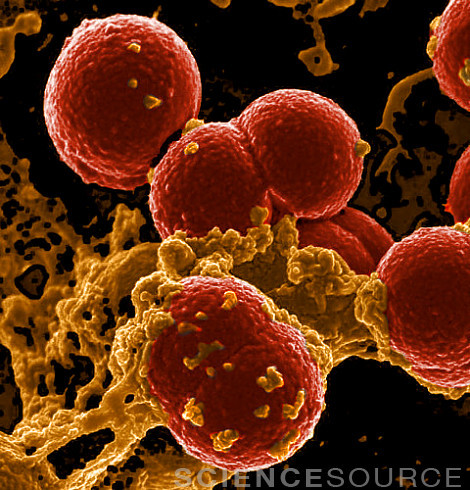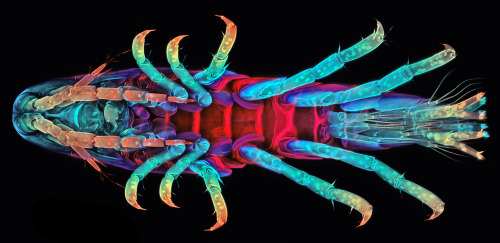#science images
How Do Fireworks Get Their Colors? It’s Element-ary!
Those beautiful explosions in the sky that take our breath away are powered by chemistry. Fireworks display different colors due to the various kinds of materials packed inside them. For example, the image above shows positive results of flame tests for various chemical elements. A flame test is an analytic procedure used in chemistry to detect the presence of certain elements, primarily metal ions, based on each element’s characteristic emission spectrum.
Click here to see more Flame Test images
When certain metals are heated, their electrons momentarily jump to a higher energy level. When these electrons settle back down to their original energy level, the cooling process emits a photon. Depending on the material, the photon will have a different wavelength and, therefor, will emit a different color. The flame colors vary for different elements and can be used to identify unknown substances. The ones shown above are (from left to right): copper (green), lithium (red), strontium (red), sodium (yellow), copper (green), and potassium (lilac).
Images above © SPL / Science Source
Post link
Image JC3202 (Neutrophil Ingesting MRSA Bacteria)
Colorized scanning electron micrograph of Neutrophil white blood cells (light orange) ingesting Methicillin-Resistant Staphylococcus Aureus bacteria (deep red).
Methicillin-Resistant Staphylococcus Aureus (MRSA), also called multidrug-resistant staphylococcus aureus and oxacillin-resistant staphylococcus aureus (ORSA). This bacterium is responsible for several difficult-to-treat infections in humans.
MRSA is any strain of Staphylococcus aureus that has developed resistance to beta-lactam antibiotics, like penicillins and cephalosporins. Strains unable to resist these antibiotics are classified as methicillin-sensitive Staphylococcus aureus, or MSSA.
MRSA is especially troublesome in hospitals and nursing homes, where patients with open wounds, invasive devices, and weakened immune systems are at greater risk of infection than the general public. If not treated quickly, MRSA infections can cause sepsis and death.
It is usually spread by direct contact with an infected wound or from contaminated hands, usually those of healthcare providers. Also, people who carry MRSA but do not have signs of infection can spread the bacteria to others.
The only way to know if MRSA is the cause of an infection is to perform a laboratory culture of the bacteria. Obtaining bacteria to culture is a procedure done by a doctor or nurse.
© NIAID / Science Source
Post link
Because Bees Don’t Have Pockets
The pollen basket or Corbicula (plural corbiculae) is part of the tibia on the hind legs of certain species of bees. They use the structure in harvesting pollen and returning it to the nest or hive. Bees in four tribes of the family Apidae, subfamily Apinae: the honey bees, bumblebees, stingless bees, and orchid bees have corbiculae.
The corbicula is a polished cavity surrounded by a fringe of hairs, into which the bee collects the pollen; most other bees possess a structure called the scopa, which is similar in function, but is a dense mass of branched hairs into which pollen is pressed, with pollen grains held in place in the narrow spaces between the hairs.
A honey bee moistens the forelegs with its protruding tongue and brushes the pollen that has collected on its head, body and forward appendages to the hind legs. The pollen is transferred to the pollen comb on the hind legs and then combed, pressed, compacted, and transferred to the corbicula on the outside surface of the tibia of the hind legs.
Top photo: Honeybee on flower. © James H. Robinson / Science Source
Lower photo: SEM, bee pollen basket © Dennis Kunkel / Science Source
Post link
Just Small Genetic Tweaks To Chinese Bird Flu Virus Could Fuel A Human Pandemic
by Nell Greenfieldboyce / NPR Health
A study published Thursday shows how a bird flu virus that’s sickening and killing people in China could mutate to potentially become more contagious.
Just three changes could be enough to do the trick, scientists report in the journal PLOS Pathogens.
And the news comes just as federal officials are getting ready to lift a moratorium on controversial lab experiments that would deliberately create flu viruses with mutations like these.

Public health officials have been worried about this bird flu virus, called H7N9, because it’s known to have infected more than 1,500 people — and killed 40 percent of them. So far, unlike other strains that more commonly infect humans, this deadly virus does not spread easily between people.
The fear is that if it mutates in a way that lets it spread more easily, the virus will sweep around the globe and take a heavy toll, because people’s immune systems haven’t ever been exposed to this type of flu before. Past pandemics caused by novel flu viruses jumping from animals or birds into people have killed millions.
Post link
From creepy crustacean to better biofuels (and regrowing a limb?)
Could this creature from the deep be a part of the answer to not one, but two of the major challenges in 21st century bioscience?
The top pic is the marine arthropod Parhyale hawaiensis, which, although looming large in this picture, is typically about 1mm long! But small size is no obstacle for scientists with huge ambitions – like finding out if humans could even regrow limbs. Parhyale can, and so researchers led by Dr Aziz Aboobaker at the University of Oxford have just sequenced this critter’s DNA and observed a few mutants along the way (second pic).
And lying undetected in this organism’s genome were the genes for digesting lignocellulose (that’s the posh term for ‘wood’). This is a big deal, because humans and 99.9% of other animals can’t digest wood, but it’s packed with energy. Engineering these wood-digesting genes into microbes could bring cheaper and better biofuels a step closer.
Images: Image: Anastasios Pavlopoulos and Igor Siwanowicz from HHMI Janelia Research Campus, published under https://creativecommons.org/licenses/by/4.0
Post link









